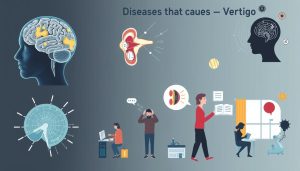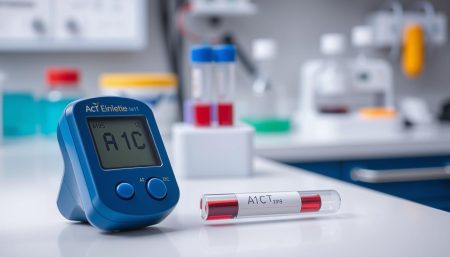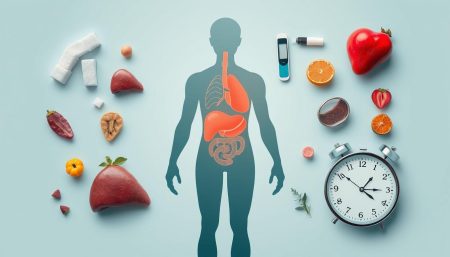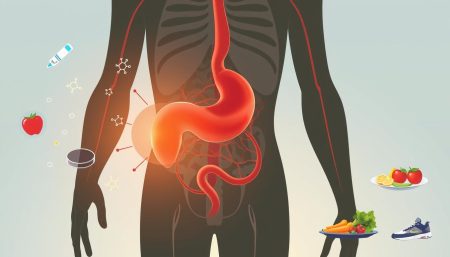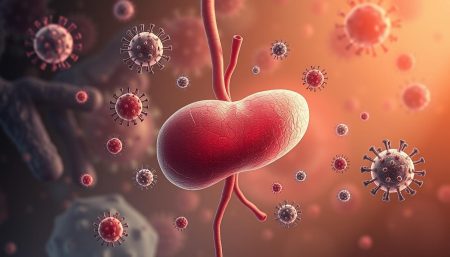The world faces a big challenge with diabetes mellitus type 2, a long-term health issue. It’s important for everyone to know about type 2 diabetes symptoms and how to manage it. This guide will help you understand and deal with diabetes mellitus type 2.
Knowing the symptoms early can greatly improve your health in the long run. We focus on more than just treating the disease. We want to help you manage it in a way that fits your life. We’ll explore how to diagnose, control, and live with diabetes mellitus type 2.
Recognizing symptoms early can make a big difference. Our goal is to help you manage diabetes in a way that works for you. We’ll look at the causes, treatment options, and how to take care of your health.
Understanding Type 2 Diabetes Mellitus
Type 2 diabetes mellitus is a long-term condition that affects how the body handles blood sugar (glucose). It can happen when the body doesn’t make enough insulin or when it can’t use insulin well. Knowing about type 2 diabetes is key for both patients and doctors.
Defining Diabetes Mellitus Type 2
Diabetes type 2, also known as adult-onset diabetes, is caused by insulin resistance and low insulin production. This results in high blood sugar levels, leading to health problems over time.
Causes and Risk Factors for Type 2 Diabetes
Factors that increase the risk of type 2 diabetes include genetics, obesity, lack of exercise, and diet. Knowing these risks helps in preventing and managing type 2 diabetes.
Prevalence and Demographics
Diabetes type 2 affects different groups in different ways. It’s more common in older adults, some ethnic groups, and those with a family history of diabetes. Recent studies show a worrying rise in cases among younger people worldwide. This calls for urgent action to prevent it.
| Age Group | Prevalence (%) |
|---|---|
| 20-45 | 5.8 |
| 46-65 | 21.6 |
| Over 65 | 28.7 |
Signs and Symptoms of Type 2 Diabetes
It’s important to spot the early signs of type 2 diabetes. This helps manage the condition better. Here are the key symptoms and what they mean.
- Excessive thirst and frequent urination: These are often among the first symptoms people notice.
- Increased hunger, even after eating, because the body can’t use glucose well.
- Fatigue: Energy levels drop because cells lack glucose for energy.
- Blurred vision: High blood sugar levels can affect the lenses of your eyes, making it hard to focus.
- Slow-healing sores or frequent infections signal a weakened immune response, a common symptom in individuals with high blood sugar levels.
These symptoms of type 2 diabetes may come on slowly, making them easy to miss. Spotting them early can lead to better management. This can prevent more serious health problems.
| Early Symptoms | Associated Risks | Management Strategies |
|---|---|---|
| Excessive Thirst | Dehydration | Increased fluid intake, monitor blood sugar levels |
| Frequent Urination | Potential kidney issues | Regular check-ups, diabetes management plan |
| Blurred Vision | Vision impairment or loss | Eye examinations, control blood sugar |
| Slow-healing Sores | Infection, prolonged recovery | Proper wound care, maintain cleanliness |
| Fatigue | Reduced quality of life | Adequate rest, balanced diet, exercise |
Knowing and watching for the symptoms of type 2 diabetes is key to managing it well. It helps lead a healthier life and avoids diabetes-related problems.
Diagnosing Diabetes Type 2
Finding out if you have diabetes type 2 is key to managing it well. This part talks about the tools and methods doctors use to spot and keep track of this disease.
Blood Glucose Testing Methods
Testing blood glucose is the first step to find out if you have diabetes. These tests show how much sugar is in your blood. They give quick results that can show if you have diabetes.
The Fasting Plasma Glucose (FPG) test and the Oral Glucose Tolerance Test (OGTT) are used to check for high blood sugar. High levels mean you might have diabetes.
Understanding A1C Levels
The A1C level significance is huge when it comes to diagnosing diabetes type 2. This test shows your blood sugar levels over the last three months. It gives a bigger picture than just one-time tests.
An A1C level of 6.5% or higher on two tests usually means you have diabetes.
The Importance of Regular Health Screenings
Regular health screenings for diabetes are vital for both diagnosing and managing the disease. These regular checks help see how the disease is progressing and if your treatment is working. They let doctors make changes to your treatment plan as needed.
| Test | Significance | Recommended Frequency |
|---|---|---|
| Fasting Plasma Glucose | Measures blood glucose after 8 hours of fasting | Annually |
| Oral Glucose Tolerance Test | Measures blood glucose before and after consuming a sugary drink | Every 2-3 years |
| A1C Test | Reflects average blood glucose levels over 3 months | Twice a year |
Comprehensive Guide to Managing Type 2 Diabetes
Managing type 2 diabetes requires a complete approach. This includes monitoring blood sugar, making dietary changes, and adopting lifestyle modifications. These steps are key to keeping your health in check and avoiding diabetes complications.
Monitoring Blood Sugar
Keeping an eye on blood sugar levels is vital for managing type 2 diabetes. It helps patients see how their diet and activity affect their glucose. Using digital glucometers gives quick results and tracks changes over time.
Dietary Changes for Diabetes Management
Making the right food choices is critical for controlling blood sugar. It’s about balancing nutrients and choosing whole foods to avoid sudden spikes in blood sugar. Here’s a list of foods to pick and those to avoid:
| Prefer | Avoid |
|---|---|
| Whole grains (oats, quinoa) | Refined grains (white rice) |
| Leafy greens (spinach, kale) | Starchy vegetables (potatoes) |
| Lean proteins (chicken breast, legumes) | Fatty meats (bacon) |
| Fruits with low glycemic index (berries, apples) | Fruits with high glycemic index (bananas) |
Exercise and Lifestyle Modifications
Adding exercise to your routine boosts insulin sensitivity and helps manage blood sugar. Aim for aerobic, strength, and flexibility exercises. Also, stress management and enough sleep improve glucose metabolism.
Treatment Options for Type 2 Diabetes
Managing type 2 diabetes needs a full plan that includes medicines and lifestyle changes. Keeping blood sugar levels right is key. It helps avoid serious health problems and improves life quality.
The first step in treating type 2 diabetes is making lifestyle changes. Eating right and exercising are very important. They help control blood sugar levels.
Getting the right diet is essential. It helps manage calorie and carb intake. This keeps weight healthy. Also, regular exercise boosts insulin use and helps with weight.
- Dietary Changes: Focus on balanced meals with controlled carbohydrate intake.
- Exercise: Aim for at least 30 minutes of moderate activity most days of the week.
When diet and exercise aren’t enough, medicines are used. There are many types of medicines for type 2 diabetes. Each one works differently to lower blood sugar.
- Metformin: Reduces hepatic glucose production and increases insulin sensitivity.
- Sulfonylureas: Stimulate the pancreas to produce more insulin.
- DPP-4 inhibitors: Help increase incretin levels, which improve insulin secretion and lower glucagon production.
- Insulin therapy: Used when other medications do not provide sufficient blood glucose control.
Every medicine has its own benefits and side effects. This is why treating diabetes needs a personal approach. Often, a mix of treatments works best for managing diabetes.
Seeing your doctor regularly is very important. They check if the treatments are working. They also make changes if needed. This care is key to managing diabetes well and avoiding health problems.
Oral Medications for Diabetes Type 2
There are many oral medications for Type 2 Diabetes now. These help control blood sugar and are key to managing diabetes. Metformin, SGLT2 inhibitors, and DPP-4 inhibitors are some of the most important ones.
Metformin: The First Line Medication
Metformin is often the first choice for treating Type 2 Diabetes. It helps your body use insulin better and lowers liver glucose release. It’s known for being safe and not causing weight gain, which is a big plus.
SGLT2 Inhibitors and Their Role
SGLT2 inhibitors are a newer option for Type 2 Diabetes. They stop the kidneys from reabsorbing glucose, lowering blood sugar and helping with weight loss. Empagliflozin and Dapagliflozin are examples of these drugs.
DPP-4 Inhibitors: How They Work
DPP-4 inhibitors block an enzyme that breaks down hormones in the gut. This action makes your pancreas produce more insulin and your liver make less glucose. Sitagliptin and Saxagliptin are examples, often used with other diabetes drugs.
Insulin Therapy in Type 2 Diabetes Management
For many with type 2 diabetes, insulin therapy is key to staying healthy. It’s a big step that needs careful thought. This includes looking at how well other treatments work and the person’s health.
When to Start Insulin
Insulin is often started when other treatments don’t control blood sugar well. Or when it’s needed to fight high blood sugar hard. Doctors start insulin based on blood sugar checks and HbA1c targets.
Types of Insulin and Dosage Recommendations
There are many insulins, like rapid-acting and long-acting. Dosages are tailored to each person. They start low and increase based on how well it works and blood sugar checks.
Self-Monitoring and Injection Techniques
Checking blood sugar regularly is key to managing diabetes. It helps decide on diet, exercise, and insulin. Using the right injection techniques is also important. It makes sure insulin works best.
| Insulin Type | Onset | Peak | Duration |
|---|---|---|---|
| Rapid-acting | 15 minutes | 1 hour | 2-4 hours |
| Short-acting | 30 minutes | 2-3 hours | 3-6 hours |
| Intermediate-acting | 2-4 hours | 4-12 hours | 12-18 hours |
| Long-acting | 1-2 hours | None | Up to 24 hours |
Lifestyle Interventions for Blood Sugar Control
Effective lifestyle interventions for diabetes are key to managing type 2 diabetes. They help control blood sugar and prevent diabetes. Making lifestyle changes can greatly improve health for those at risk or with diabetes.
- Eating balanced, nutritious meals to keep blood sugar stable.
- Staying active to maintain a healthy weight and improve insulin use.
- Getting enough sleep and managing stress to lower blood sugar.
- Quitting smoking to reduce diabetes complications.
Starting these changes needs a plan and support. Here’s how lifestyle changes can improve health:
| Lifestyle Change | Impact on Blood Sugar Levels | Effect on Diabetes Risk |
|---|---|---|
| Improved Nutrition | Reduces blood sugar spikes | Lower diabetes incidence by up to 30% |
| Increased Physical Activity | Enhances insulin sensitivity | Reduces risk by 25-35% |
| Stress Management | Stabilizes blood sugar levels | Helps in maintaining overall health |
| Quitting Smoking | Better overall health outcomes | Decreases risk of cardiovascular diseases |
By adding these lifestyle changes to your daily routine, you can manage and prevent type 2 diabetes. This leads to a healthier, more balanced life.
The Role of Weight Management in Diabetes Care
Managing weight is key for those with type 2 diabetes. Good weight management in diabetes care helps control blood sugar. It also lowers the chance of other health problems.
Obesity and Type 2 Diabetes: The Connection
The connection between obesity and type 2 diabetes is clear. Being overweight is a big risk for diabetes. Belly fat releases chemicals that make cells resistant to insulin, raising blood sugar.
Weight Loss Strategies for Blood Sugar Control
To lose weight well, you need lifestyle changes, diet tweaks, and exercise. Weight loss plans suggest eating foods high in fiber and low in sugar and fat. They also recommend regular aerobic and strength training.
Bariatric Surgery and Diabetes Remission
For those with severe obesity and type 2 diabetes, bariatric surgery for diabetes might help. Research shows it can greatly improve blood sugar control. Sometimes, it even leads to diabetes remission.
It’s important to understand how weight, obesity, and diabetes are connected. With the right weight management, people can live better lives. They can also lessen the impact of their diabetes.
Breakthroughs in Treatment for Type 2 Diabetes
The search for better breakthroughs in diabetes treatment has made big strides. New medicines and treatments are being developed. One exciting area is the use of GLP-1 receptor agonists. They help control blood sugar, manage weight, and lower heart disease risk.
Also, new tech and care systems are being explored. For example, continuous glucose monitoring systems (CGMs) give patients real-time blood sugar info. This helps them manage their diabetes better and avoid low blood sugar.
Recent Eli Lilly’s research on tirzepatide is a big deal. It helps control blood sugar, aids in weight loss, and treats sleep apnea. This shows the need for treatments that tackle diabetes in many ways.
- Enhanced insulin analogs improving patient comfort and compliance
- Islet cell transplantation promising long-term benefits
- Artificial pancreas systems designed to automate insulin delivery
These changes mark a new era in diabetes care. They offer hope for better patient results. These advancements show how diabetes care is evolving, aiming for more than just blood sugar control.
Monitoring and Managing Diabetes Complications
Managing type 2 diabetes means watching for complications closely. This helps lower risks and improves life quality. It’s key to focus on heart disease, kidney health, and neuropathy for diabetic patients.
Heart Disease and Diabetes
Heart disease is a big worry for people with diabetes. It raises the risk of heart problems a lot. Keeping blood sugar, cholesterol, and blood pressure in check is very important.
Regular heart checks and eating heart-healthy foods are good ways to prevent it.
Protecting Kidney Health
Kidney disease, or nephropathy, is common in diabetes. Catching it early with tests like blood urea nitrogen and serum creatinine levels can stop it from getting worse. Keeping blood sugar and blood pressure under control is key to protecting kidneys.
Diabetes and Neuropathy
Diabetic neuropathy damages nerves all over the body. It can affect organs and systems. Symptoms include numbness, pain, and other sensory issues.
It’s vital to manage blood sugar levels and watch for signs of this complication.
| Complication | Risk Factors | Preventive Measures |
|---|---|---|
| Heart Disease | High cholesterol, high blood pressure, poor glycemic control | Healthy diet, regular exercise, medication adherence |
| Kidney Disease | Prolonged high blood sugar levels, hypertension | Regular kidney function tests, blood pressure control |
| Neuropathy | Chronic high blood glucose, duration of diabetes | Tight blood sugar control, regular physical examinations |
Support Systems for Diabetes Management
In the world of comprehensive diabetes care, diabetes support systems are vital. Managing diabetes is not just about individual effort. It needs a team effort that includes doctors, support groups, and family. These elements help improve health and quality of life for those with diabetes.
Healthcare teams are key, providing medical guidance and diabetes support systems. They include doctors, diabetes educators, and dietitians. They work together to offer comprehensive diabetes care. Support from friends and family also plays a big role in managing the disease.
- Healthcare Team: Made up of specialists for medical needs and routine care.
- Peer Support Groups: Give emotional support and share practical tips.
- Family and Friends: Offer emotional support and help with daily life.
Integrative care models combine these elements well. They create a supportive environment that makes managing diabetes easier and more effective.
| Support Element | Benefits | Examples |
|---|---|---|
| Professional Care | Direct access to specialized medical treatments and continuous health monitoring. | Regular consultations, personalized treatment plans. |
| Peer Support | Insight into daily management and emotional support, reducing feelings of isolation. | Support groups, online communities. |
| Family Involvement | Improves adherence to lifestyle and treatment plans through everyday support. | Family counseling, shared activities. |
The combination of these support systems makes managing diabetes better. It provides a strong framework for dealing with diabetes’s physical and emotional challenges. When these elements work together, people often see big improvements in managing their diabetes.
Diabetes Education and Self-Care Practices
Learning about diabetes education and practicing good diabetes self-care are key to managing diabetes well. These steps help people with diabetes manage their health every day. They also create a healthy environment.
The Importance of Diabetes Self-Education
Diabetes self-management education helps patients make smart health choices. They learn when and how to act. This knowledge is important for sticking to medication, eating right, and exercising.
Developing an Effective Diabetes Self-Care Plan
Creating a diabetes self-care plan is all about knowing what you need. It lets you manage your diabetes on your own. Learning to check your blood sugar, knowing when you’re too high or too low, and when to see a doctor are key parts.
Resources and Support Groups for Diabetes
Having access to resources and support groups is vital for managing diabetes. These groups offer emotional support, share experiences, and provide new info on diabetes self-care practices. This makes living with diabetes easier.
| Resource Type | Description | Accessibility |
|---|---|---|
| Online forums | Platforms where individuals can connect with peers and experts to discuss challenges and share tips. | Available 24/7, accessible from home. |
| Educational workshops | Sessions conducted by healthcare professionals that focus on diet, exercise, and medication management. | Frequently offered by hospitals and health centers. |
| Printed Guides | Brochures and books that offer in-depth insights about managing diabetes effectively. | Available through clinics, hospitals, or direct mail. |
Nutrition and Dietary Recommendations for Diabetes Mellitus Type 2
Managing type 2 diabetes well depends a lot on what you eat. It’s about watching how much carbohydrate you have, eating at the right times, and eating a balanced diet. This part talks about the key parts of nutrition for diabetes type 2 to keep blood sugar levels just right.
Carbohydrate Counting and Glycemic Index
Counting carbs is key in managing diabetes with diet. It means tracking how many carbs you eat at each meal to control blood sugar. Knowing the glycemic index is also important. It shows how fast carbs raise blood sugar. Foods with a low glycemic index are better for keeping blood sugar steady.
Managing Portion Size and Meal Timing
Controlling how much you eat is very important in managing diabetes with diet. Eating too much can make blood sugar go up too fast. Eating at the same times every day helps keep your blood sugar stable. Planning your meals helps avoid big changes in blood sugar.
The Role of Fiber in Diabetes Diet
Fiber is very important for digestion and helps control blood sugar. It slows down how sugar is absorbed. Eating foods high in fiber can help your digestion and manage diabetes better. It’s good to eat a variety of fiber-rich foods for a balanced diet.
| Food Category | Examples | Glycemic Index Range |
|---|---|---|
| Low Glycemic Index Foods | Lentils, barley, non-starchy vegetables | 10-40 |
| Medium Glycemic Index Foods | Quick oats, brown rice, pita bread | 40-70 |
| High Glycemic Index Foods | White bread, popcorn, pretzels | 70-100 |
Technological Advancements in Diabetes Care
The world of diabetes care has changed a lot thanks to technological advancements in diabetes. Now, we have things like continuous glucose monitoring systems and smart insulin pens. These tools make managing diabetes easier and more effective.
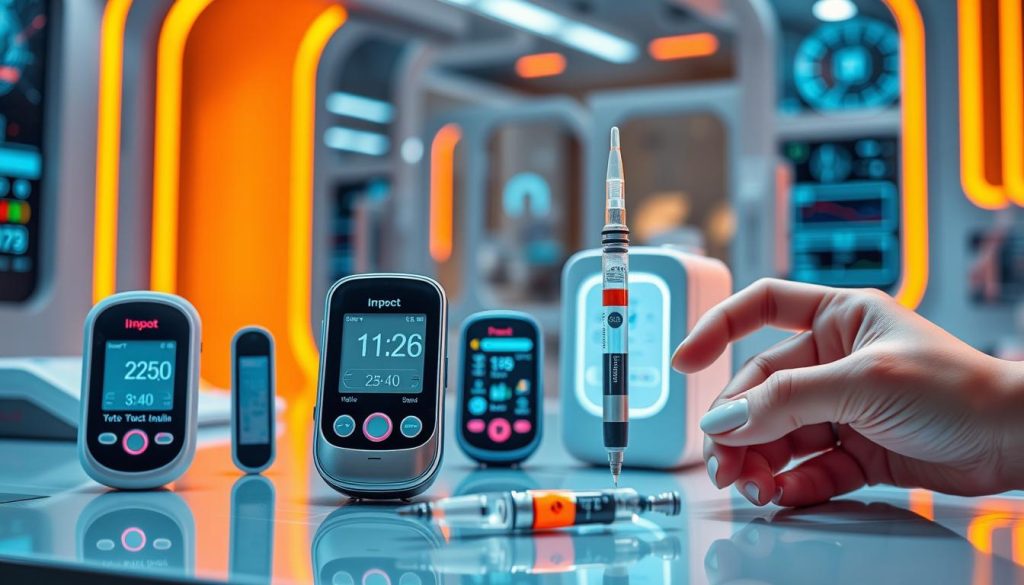
Diabetes management tools like smart apps and cloud-based data are key. They help make diabetes care more precise. These tools give patients and doctors real-time data to make better choices.
| Technology | Description | Impact on Diabetes Management |
|---|---|---|
| Continuous Glucose Monitoring (CGM) Systems | Devices that monitor glucose levels in real-time throughout the day and night. | Allows for tighter glucose control and reduces hypoglycemia risks. |
| Smart Insulin Pens | These pens record the time and dose of insulin administered and sync data with mobile apps. | Improves dosing accuracy and assists in tracking and optimizing insulin therapy. |
| Diabetes Management Apps | Applications that help patients log and analyze daily diabetes data like blood sugar levels, food intake, and exercise. | Enhances patient engagement and adherence to treatment protocols. |
Using advanced diabetes management tools helps create care plans that fit each person. It also makes life better for those with diabetes. It’s important to use these technologies for good diabetes care in today’s world.
Preventing Type 2 Diabetes Through Lifestyle Changes
The journey to diabetes prevention starts with smart lifestyle changes for diabetes. It’s clear that we can shape our health by making lifestyle choices. Eating a balanced diet rich in nutrients is key. Foods low on the glycemic index help control blood sugar and fight insulin resistance.
Regular exercise is another vital part of stopping prediabetes from turning into diabetes. Activities like brisk walking and muscle-strengthening workouts boost insulin sensitivity. Studies show that even moderate exercise can help prevent type 2 diabetes.
Keeping a healthy weight is the most effective way to avoid diabetes. Carrying extra weight, and belly fat in particular, raises diabetes risk. By eating right and exercising, you can prevent diabetes and even reverse prediabetes. This approach is about making lasting, achievable changes for better health.
FAQ
Q: What are the typical symptoms of type 2 diabetes?
A: Symptoms include feeling very thirsty and needing to urinate a lot. You might also feel tired, see things blurry, and have slow-healing wounds or infections.
Q: How is diabetes mellitus type 2 diagnosed?
A: Doctors use blood tests like fasting plasma glucose or oral glucose tolerance tests. They also check A1C levels to see how well blood sugar is controlled over time.
Q: What are some effective strategies for managing type 2 diabetes?
A: Managing it means checking blood sugar, eating right, exercising, and sometimes taking medicine or insulin. Regular health checks are also key.
Q: Can type 2 diabetes be prevented?
A: Yes, it can be prevented or delayed. This is done through healthy eating, more exercise, and keeping a healthy weight. These steps help control blood sugar and prevent diabetes.
Q: What lifestyle modifications are essential for diabetes management?
A: Important changes include eating well, staying active, managing weight, quitting smoking, reducing stress, and getting enough sleep.
Q: Are there different types of medication to treat type 2 diabetes?
A: Yes, there are many types of oral medications like Metformin and SGLT2 inhibitors. There are also different insulins for those who need injectable treatments.
Q: How do dietary changes affect diabetes management?
A: Eating right can greatly impact blood sugar control and health. Changes might include counting carbs, knowing the glycemic index, and managing portion sizes.
Q: What new technologies are available for managing diabetes?
A: New tech includes continuous glucose monitoring systems, smart insulin pens, and apps for tracking blood sugar levels. These tools help manage diabetes more efficiently.
Q: Why is weight management important in diabetes care?
A: Managing weight is key because being overweight increases diabetes risk. Losing weight can improve blood sugar control and even lead to diabetes remission for the overweight.
Q: What breakthroughs in treatment for type 2 diabetes have there been?
A: Recent advances include new drug forms, better insulin delivery methods, islet cell transplantation, and understanding genetic factors in diabetes.
Q: How can a support system aid in diabetes management?
A: A support system offers emotional support, practical help, education, and motivation. This helps people stick to treatment plans, manage stress, and achieve better health.
Q: How does insulin therapy work in treating type 2 diabetes?
A: Insulin therapy helps control blood sugar by adding or replacing insulin the body lacks. It’s tailored to individual needs based on the type and dose of insulin.




